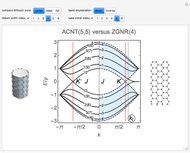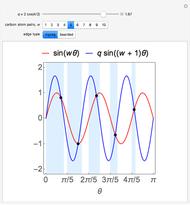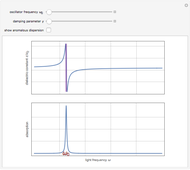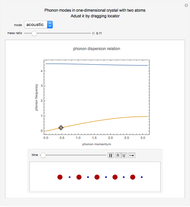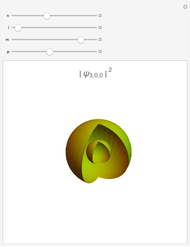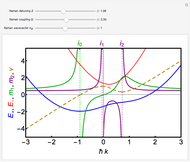Dispersion Properties of a Spin-Orbit-Coupled Bose-Einstein Condensate

Requires a Wolfram Notebook System
Interact on desktop, mobile and cloud with the free Wolfram Player or other Wolfram Language products.
A Bose–Einstein condensate (BEC) is a state of matter in which a large fraction of the particles of a bosonic gas occupy the lowest-energy quantum state. For such a system, when the particle's spin couples to its orbital angular momentum, a so-called spin-orbit-coupled Bose–Einstein condensate (SOC-BEC) is formed. This state can be achieved experimentally by using Raman lasers to couple two internal states of an atomic BEC while transferring momentum [1]. In the limit of a homogeneous and noninteracting gas, the SOC-BEC can be described by the following momentum-space Hamiltonian:
[more]
Contributed by: David Colas, Fabrice P. Laussy and Matthew J. Davis (September 2017)
Open content licensed under CC BY-NC-SA
Snapshots
Details
The Snapshots show various configurations of the SOC-BEC dispersion.
Snapshot 1: the lower branch only exhibits a large negative mass  for positive wavevectors, affecting the value of the velocity
for positive wavevectors, affecting the value of the velocity
Snapshot 2: the lower branch exhibits both negative mass  and
and  for positive wavevectors, affecting both the value and the sign of the velocity
for positive wavevectors, affecting both the value and the sign of the velocity
Snapshot 3: the lower branch exhibits a broader range of wavevectors for which there is a negative mass  ; this is obtained from Snapshot 2 by using the sliders to increase the Raman detuning and wavevector values
; this is obtained from Snapshot 2 by using the sliders to increase the Raman detuning and wavevector values
References
[1] Y.-J. Lin, K. Jiménez-Garcia and I. B. Spielman, "Spin–Orbit-Coupled Bose–Einstein Condensates," Nature, 471(7336), 2001 pp. 83–86. doi:10.1038/nature09887.
[2] D. Colas and F. P. Laussy, "Self-Interfering Wave Packets," Physical Review Letters, 116, 2016 026401. doi:10.1103/PhysRevLett.116.026401.
Permanent Citation




















